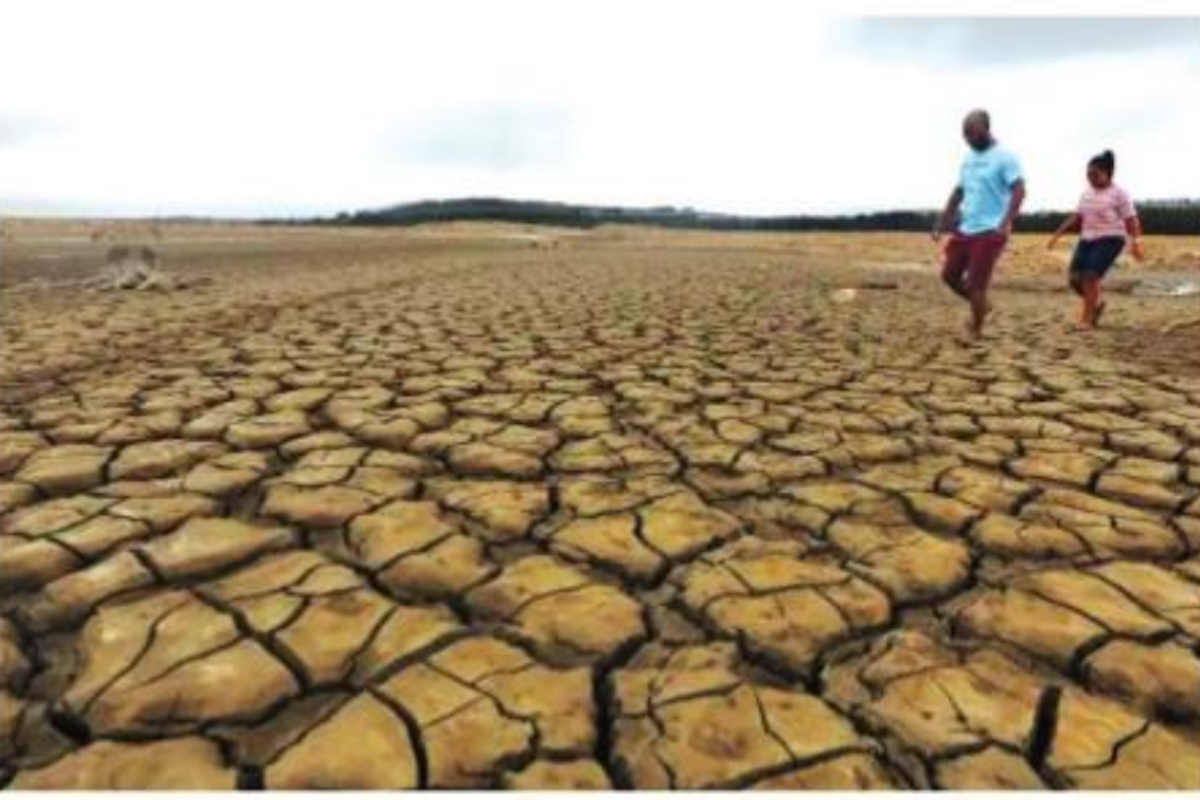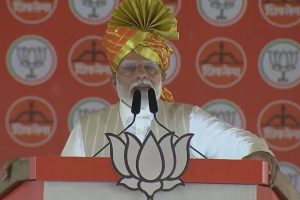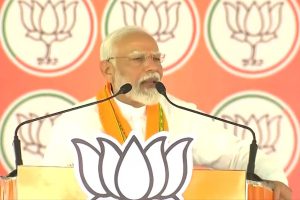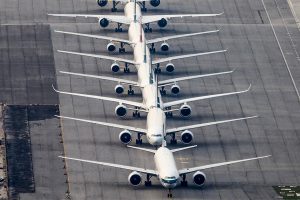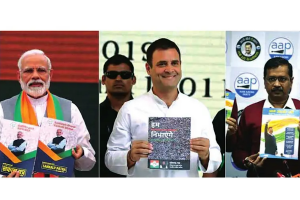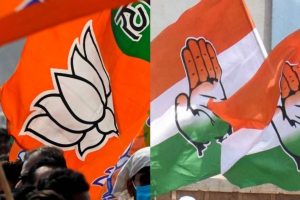The Bundelkhand region is spread over 13 districts of Central India in two states (Uttar Pradesh and Madhya Pradesh). Resolving water shortages in numerous villages and towns has been the most discussed development challenge in recent years.
This has involved two aspects – construction of large or medium dams on the one hand and undertaking decentralized, small-scale water conservation work on the other hand. However, the balance of resource availability has favoured big projects, even though the performance of several has been much below expectation and has involved the displacement of people as well as other serious adverse effects. In more recent times, this debate has been reflected most in terms of arguing for a scrapping of the massive water-transfer project, the Ken-Betwa Link, and using the huge funds allocated to it for small-scale water conservation work, including water harvesting, increasing forest cover and improving pastures and grasslands.
The debate has also intensified on whether over 2.3 million trees which are threatened by the Ken Betwa Link project can be saved. To consider options, let us first remember that the Central Empowered Committee of the Supreme Court had presented a strong critique of several aspects of this project, estimated to cost around Rs. 45,000 crore in August 2019.
Several independent experts, separately and in groups, have also criticised the threat to many villagers as well as to the Panna Tiger Reserve. Additionally, the lack of clear evidence that surplus water still exists in the Ken to divert it to the Betwa has been questioned. In popular discussion, the project has been presented as a solution to Bundelkhand’s problems, but it may well aggravate the problems of people here, particularly in Panna (MP) and Banda (UP) districts.
Distribution of Ken-Betwa Link funds between the 13 districts of Bundelkhand could make available over Rs. 3,500 crore to each of the 13 districts of the Bundelkhand region for water conservation over the next eight years. Even if other districts are to be included, Rs. 2250 crore each can be provided to 20 districts over the next eight years for small-scale water conservation and water harvesting, minor irrigation and improvement of green cover.
It is clear to those involved with water issues that if Ken-Betwa project funds are instead spent on small-scale water conservation and rainwater harvesting projects, apart from repairing and improving existing traditional water systems, as well as on increasing green cover in various ways, it will make a huge contribution to resolving the water crisis of Bundelkhand. But this reality is not being accepted by those who want to benefit from the mega project’s huge funding, concentrated in one place.
In the past, the water crisis in Bundelkhand has been attributed to deforestation, mismanagement and wrong priorities and not necessarily to inherent water shortage. It is important to remember that: Bundelkhand normally receives about 900 to 1000 mm. annual rainfall.
Bundelkhand has a network of seven major rivers – Chambal, Sind, Betwa, Dhansan, Ken, Tons and Yamuna, and ten smaller rivers – Pahuj, Paisuni, Baghein, Sonar, Vyarma, Mahuar, Urmil, Lakheri, Jamni, Bina, and their numerous tributaries.
This region had also been rich in traditional water collection sources.
A report titled ‘Problems and Potential of Bundelkhand with Special Reference to Water Resource base’ was prepared by the Centre for Rural Development and Technology (CRDT) and Vigyan Shiksha Kendra (VSK). This report (CRDT-VSK Report) noted several special features of Bundelkhand, “The rainfall is capricious and erratic in amount, pattern, intensity and distribution. Extreme deviations from the normal are quite common. About 90 per cent of the total rainfall is received during four months, July to September. The high intensity of rain hardly leaves any time for the water to infiltrate into the soil, and the deforestation has left little scope to capture the rainwater and transport it to ground-water levels.”
It states: “Among the regions to the south of the Himalayan Foothills, Bundelkhand has a larger share of rocky formation with slopy terrain. Because of the Vindhyan plateaus flanked by high steep cliffs, this region has an unusually high rate of water run-off gushing towards the north, creating deep gorges and rapids. This has meant greater problems of water retention.”
Keeping in view these factors, the following solutions could work better for Bundelkhand:
Revival of Traditional Water Sources: In recent decades many traditional sources of water have suffered from neglect. Adequate resources should be made available for repair, cleaning and maintenance of traditional water sources. As the CRDT-VSK Report says. “Notably, the reservoirs constructed at the foothills by the Chandelas between the ninth and thirteenth centuries and by the Bundelas later, are still existing, partially fulfilling the need for irrigation and even drinking water in their respective areas. All these reservoirs seem to have been scientifically designed with the provision of spillways for surplus water. Some reservoirs are found to have been connected with canals which were used as recharging sources for the downstream irrigation wells and/or for irrigating the fields directly. In addition, check dams, weirs, barrages, wells, step-wells (bavdis) and artesian wells were constructed. Bundelkhand has, thus, a glorious tradition of reservoirs, tanks, ponds, wells, which have gone into disuse in certain parts of the region.” Adequate efforts should be made to protect the traditional water sources and their catchment areas, whenever possible.
Efforts should be made to understand how the traditional system works, particularly in the case of inter-linked water sources, and renovation work should be carried out on the basis of this understanding. Local people should be closely involved not only in the actual work but also in the planning.
New Water-Harvesting Work: Learning from the traditional well-constructed structures which have
lasted for so long, new tanks, check dams, field ponds and wells need to be created where feasible. In Patha or plateau areas, there is good scope for creating low-cost drinking water sources by tapping small natural springs and creating small well-like structures around them to keep the water clean.
In a paper titled ‘Solving water problems of Bundelkhand’, P.R. Pisharoty, a well-known expert on water-related issues, has made some specific recommendations:
Contour bunding on gently sloping terrain.
Construction of several water ponds – three to four in each village – with each of them being at least 8 meters deep. The surface area of each pond can vary from a tenth of a hectare to one or two hectares. They should be so located that each has a catchment area fifty to a hundred times its surface area. A depth of eight meters is necessary since the average evaporation over the Bundelkhand area is two to three meters of water per year. Water from some of these tanks can be pumped into deep wells as a method of recharging groundwater.
Individual houses or housing complexes should have underground, cement-lined “reservoirs” into which the rainwater falling on the roofs of the buildings and the open spaces around them can be led through suitable closed pipes or channels.
Shallow broad area percolation tanks should be used. Due to the heaviness of our rainfall, it is less penetrating in proportion to quantity than in those countries where much of it falls in a state of fine division. The rate of penetration over Bun- the delkhand area is likely to be 10 to 15 per cent of the monsoon rainfalls.
Hence the need for special efforts to increase the groundwater recharge.
Protect Forests, Plant More Trees: As forests of this region have been badly depleted in recent years, there is a clear need to protect whatever is left and to plant many more trees.
A massive effort for afforestation of the hills can be successful only with the close involvement of people. As afforestation is not easy on denuded hills, soil and water conservation efforts must be made to first create conducive conditions for plants and trees to survive. Mixed indigenous species should be planted, trying to mimic natural local forests as much as possible. Regeneration of degraded areas should be taken up with the involvement of weaker sections, particularly tribal communities.
The CRDT-VSK Report places emphasis on the role of grasslands. “Development of grasslands, as sources of fodder for cattle is necessary to prevent cattle grazing in the slopes of the hills. Grasslands, apart from providing fodder and contributing to the success of afforestation of hills, will help to soak of the rain and recharging groundwater.”
Restrict practices which Increase water scarcity: At least three such restrictions may be emphasised here (a) restrictions on excessive ground-water extraction (b) restrictions on destructive mining practices and (c) restrictions on highly water-intensive crops. Destructive mining practices have been responsible for creating water scarcity in several villages.
Making use of Mangal Turbine; A farmer scientist of Bundelkhand Mangal Singh had invented the Man- gal Turbine to provide a means of lifting water from streams without using diesel or electricity. The Maithani Committee appointed by the Rural Development Ministry, Government of India, as well as several officials and independent experts have praised this invention. Although this has wider relevance, as it was invented in the special conditions of Bundelkhand, its relevance is particularly high for the region.
If proper priorities are decided and adequate attention is given to these aspects, water scarcity can be tackled effectively and there is no real need for implementing costly and dubious projects like the Ken-Betwa Link.

